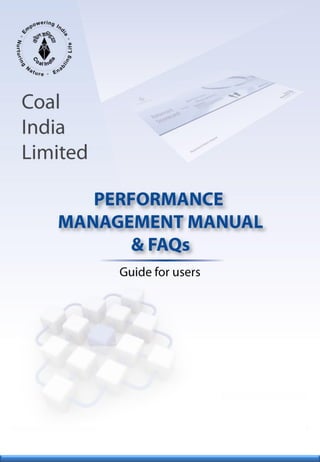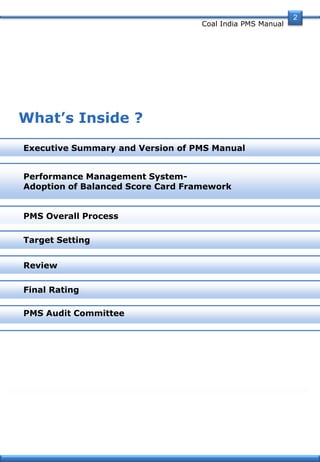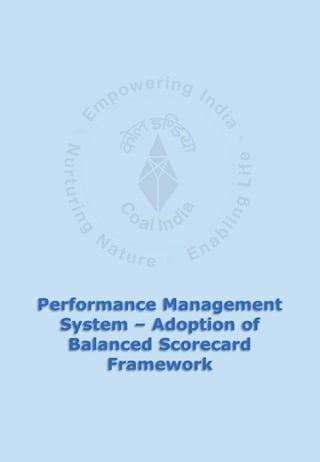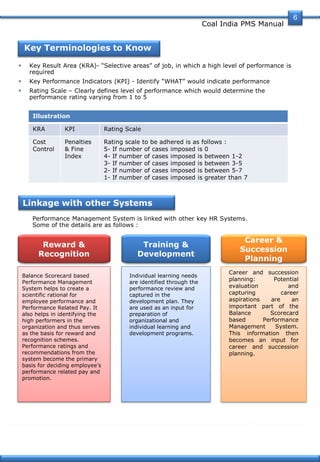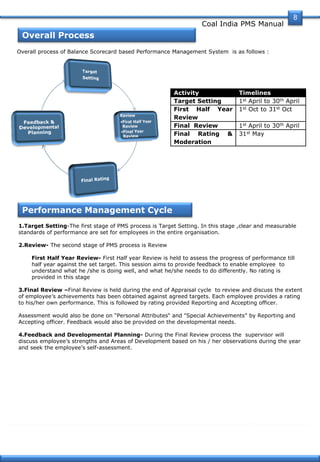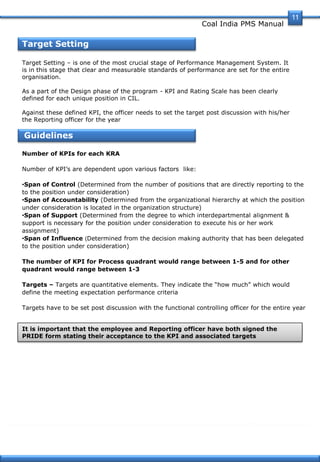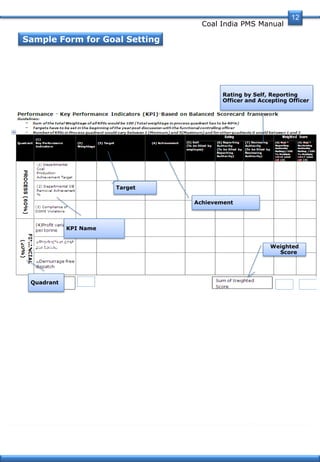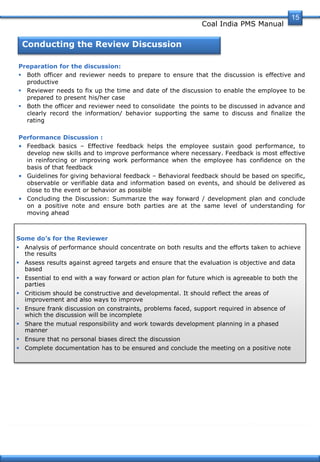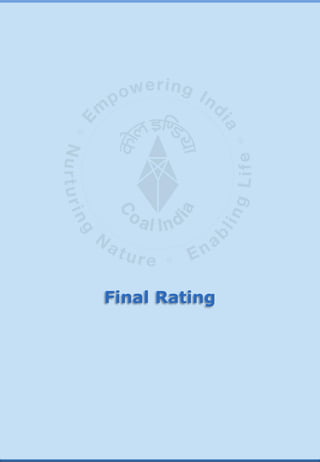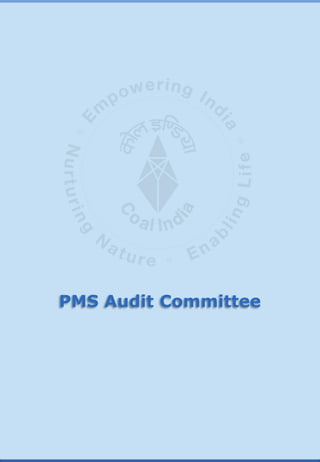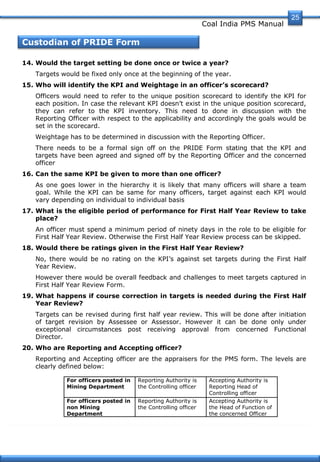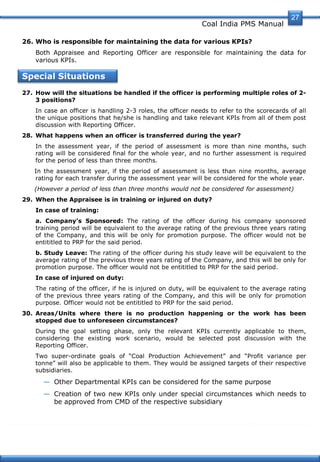Coal India has implemented a new balanced scorecard-based performance management system to increase fairness, transparency and a culture of meritocracy. The system links performance ratings to compensation, training, career progression and rewards. Key elements include setting targets, mid-year and final reviews between employees and supervisors, evaluating performance on key metrics and personal attributes, and determining an overall rating. Performance is assessed across financial, customer, internal processes and learning/growth perspectives. The system aims to cascade organizational goals down while recognizing accomplishments and identifying development areas to improve performance.
